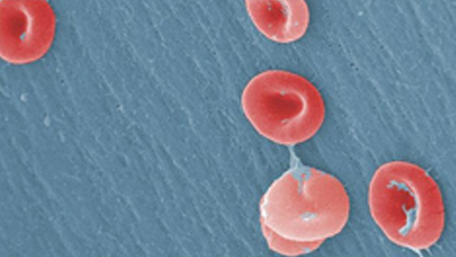
04/02/2024
Hot Topics of the Day are picked by experts to capture the latest information and publications on public health genomics and precision health for various diseases and health topics. Sources include published scientific literature, reviews, blogs and popular press articles.
Sign up MyPHGKB to receive the daily hot topic email alert.
Archived Hot Topics of the Day By Date
Newborn screening for Duchenne muscular dystrophy: the perspectives of stakeholders.
Charli Ji et al. Lancet Reg Health West Pac 2024 3 101049
From the abstract: "Participants included 50 caregivers and 26 HCPs (68.5% and 53.1% response rate respectively). Most caregivers (40/50, 80%) perceived net benefits of DMD NBS and highlighted an early diagnosis as actionable knowledge, even with the current paucity of disease modifying therapies. This knowledge was valued to enable access to multidisciplinary supportive care (29/50, 58%), clinical trials (27/50, 54%), psychological support (28/50, 56%), inform reproductive planning (27/50, 54%), and facilitate financial planning based on the future needs of their child (27/50, 54%). "
Birth Prevalence of Sickle Cell Disease and County-Level Social Vulnerability - Sickle Cell Data Collection Program, 11 States, 2016-2020.
Mariam Kayle et al. MMWR Morb Mortal Wkly Rep 2024 3 (12) 248-254
From the abstract: " Sickle cell disease (SCD) remains a public health priority in the United States because of its association with complex health needs, reduced life expectancy, lifelong disabilities, and high cost of care. A cross-sectional analysis was conducted to calculate the crude and race-specific birth prevalence for SCD using state newborn screening program records during 2016-2020 from 11 Sickle Cell Data Collection program states. The percentage distribution of birth mother residence within Social Vulnerability Index quartiles was derived. Among 3,305 newborns with confirmed SCD (including 57% with homozygous hemoglobin S or sickle ß-null thalassemia across 11 states, 90% of whom were Black or African American [Black], and 4% of whom were Hispanic or Latino), the crude SCD birth prevalence was 4.83 per 10,000 (one in every 2,070) live births and 28.54 per 10,000 (one in every 350) non-Hispanic Black newborns. "
Challenges and opportunities for Lynch syndrome cascade testing in the United States.
Lauren E Passero et al. Fam Cancer 2024 3
From the abstract: " Lynch syndrome is an underdiagnosed genetic condition that increases lifetime colorectal, endometrial, and other cancer risk. Cascade testing in relatives is recommended to increase diagnoses and enable access to cancer prevention services, yet uptake is limited due to documented multi-level barriers. Individual barriers such as feelings of fear, guilt, and anxiety and limited knowledge about Lynch syndrome as well as interpersonal barriers including complex family dynamics and language barriers limit family communication about Lynch syndrome and prevent uptake of genetic screening for relatives. Organizational and environmental barriers including a shortage of genetics professionals, high costs, and fears of discrimination also reduce cascade testing. These multi-level barriers may disproportionately impact underserved populations in the United States,"
Overcoming barriers to single-cell RNA sequencing adoption in low- and middle-income countries
TB Serebour et al, EJHG, April 2, 2024
From the abstract: " The advent of single-cell resolution sequencing and spatial transcriptomics has enabled the delivery of cellular and molecular atlases of tissues and organs, providing new insights into tissue health and disease. However, if the full potential of these technologies is to be equitably realised, ancestrally inclusivity is paramount. Such a goal requires greater inclusion of both researchers and donors in low- and middle-income countries (LMICs). In this perspective, we describe the current landscape of ancestral inclusivity in genomic and single-cell transcriptomic studies. We discuss the collaborative efforts needed to scale the barriers to establishing, expanding, and adopting single-cell sequencing research in LMICs."
A framework for the evaluation and reporting of incidental findings in clinical genomic testing
CM Brown et al, EJHG, April 2, 2024
From the abstract: "Herein we describe a framework developed to guide the evaluation and return of IFs encountered in probands undergoing clinical genome sequencing (cGS). The framework prioritizes clinical significance and actionability of IFs and follows a stepwise approach with stopping points at which IFs may be recommended for return or not. Over 18 months, implementation of the framework in a clinical laboratory facilitated the return of actionable IFs in 37 of 720 (5.1%) individuals referred for cGS. "
Utilizing geospatial artificial intelligence to map cancer disparities across health regions
A Fadiel et al, Sci Report, April 2, 2024
From the abstract: "We have developed an innovative tool, the Intelligent Catchment Analysis Tool (iCAT), designed to identify and address healthcare disparities across specific regions. Powered by Artificial Intelligence and Machine Learning, our tool employs a robust Geographic Information System (GIS) to map healthcare outcomes and disease disparities. iCAT allows users to query publicly available data sources, health system data, and treatment data, offering insights into gaps and disparities in diagnosis and treatment paradigms. "
Newborn Screening for Inborn Errors of Metabolism by Next-Generation Sequencing Combined with Tandem Mass Spectrometry
C Tang et al, IJNS, March 2024
From the abstract: " We performed a multicenter study of 29,601 newborns from eight screening centers with NBS via NGS combined with MS/MS. A custom-designed panel targeting the coding region of the 142 genes of 128 inborn errors of metabolism (IEMs) was applied as a first-tier screening test, and expanded NBS using MS/MS was executed simultaneously. In total, 52 genes associated with the 38 IEMs screened by MS/MS were analyzed. The NBS performance of these two methods was analyzed and compared respectively. A total of 23 IEMs were diagnosed via NGS combined with MS/MS. The incidence of IEMs was approximately 1 in 1287. Within separate statistical analyses, the positive predictive value (PPV) for MS/MS was 5.29%, and the sensitivity was 91.3%. However, for genetic screening alone, the PPV for NGS was 70.83%, with 73.91% sensitivity. "









